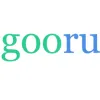Take a look inside 7 images
Gooru
Pros: Free access to standards-aligned content with matching assessments, plus automated tools for helping students deepen their understanding.
Cons: With thousands of off-site resources, broken links and uneven user experiences abound.
Bottom Line: Though it's not perfect, it's a great portal for supplementing classroom instruction and supporting personalized learning.
You can explore Gooru's features through a free, self-paced demo on their website: Look for "Explore as Guest" on the Gooru homepage and take a spin through the teacher and student views to get a sense of the platform's features, look, and feel. You might consider using the tool as a supplemental resource for the classroom; search the content library by standards, subject matter, or grade level to find topics that match your curriculum, and then assign items to your students and monitor their progress. Consider using the tool to personalize learning for your students, either for reinforcement or remediation. In general, it's time well spent to explore the content library: In addition to K-12 resources in math, science, social studies, and language arts, there are materials for adult education that include soft skills that could work well for high school students in career and technical education courses. There's a vast array of content here, so take some time to explore -- and to verify that the resources you choose are up to date and fit well with your classroom.
Gooru is a web-based "learning navigator" platform for discovering and exploring online learning content. Teachers can use this "GPS for learning" to create classes, choose content for their students (by selecting from the site's extensive content library or linking out to their own resources stored elsewhere), create assessments, and then monitor students' progress. The site features millions of resources -- including videos, worksheets, activities, and more -- all sourced from more than 500 publishers, including reputable content providers like Khan Academy and PBS Learning Media. Each standards-aligned module ends with a brief assessment, which can feature automatically graded questions (like multiple-choice questions) or more open-ended questions that require a written response or uploaded student work. Gooru then recommends a learning pathway for students based on their performance, recommending additional content based on their past assessment performance. Teachers and students can track learning progress with several data visualization options.
Students and teachers don't need a Gooru account to search the site or browse collections. They can search by subject area and drill down to specific lessons ("collections") within each topic. For teachers, collections within most courses also indicate which Common Core State Standards or Next Generation Science Standards align with the materials. While Gooru's resources might originate from anywhere on the web, users view them as they're embedded within the site's interface. With a free account, teachers can create collections for their students to view in a specific order, presumably giving purpose to an overall learning arc. The site is designed to allow easy transitions between video clips, digital textbook chapters, and websites, and all navigation takes place within the Gooru window.
To see how this tool works, watch our video overview of Gooru.
Full Disclosure: Gooru and Common Sense Education share a funder; however, that relationship does not impact Common Sense Education's editorial independence and this learning rating.
Overall, Gooru's developers have made admirable progress toward a lofty goal. It's remarkable that there's this much high-quality content available and that it's all organized in a way that might help students discover resources that match up with their learning needs and help educators assess student understanding and get instant data visualization about student progress. It's also impressive that the platform plays well with other commonly used learning management systems like Canvas and PowerSchool. It especially excels with its built-in assessments. As students take the quizzes, they get immediate feedback. The assessments do a good job of promoting metacognition and students' ownership over their own learning; however, in the end, they're still quizzes rather than more holistic assessments of learning. The analytics tool allows teachers and students to monitor engagement, comprehension, and progress. This feature helps teachers differentiate learning, and it's available when teachers create a class and students choose to share their results.
Gooru sounds almost too good to be true, and it's certainly not perfect. Since the site indexes content rather than hosting it, that content is at the mercy of wherever it's stored. At the time of this review, even some of the open educational resources available in the public demo section of the Gooru website led to broken links and removed YouTube videos. Also, some items, such as the digital textbook pages, don't always load correctly. Every part of a collection also has an option for narration or customizable directions (which can help guide students through a challenging learning path). These features can help students work independently, but the narrations are only viewable as text; struggling readers or visually impaired students may need more support. Like any other classroom tool, Gooru will require curation and monitoring from the teacher, but its automated features are a promising tool for supporting learning and differentiating instruction.
















